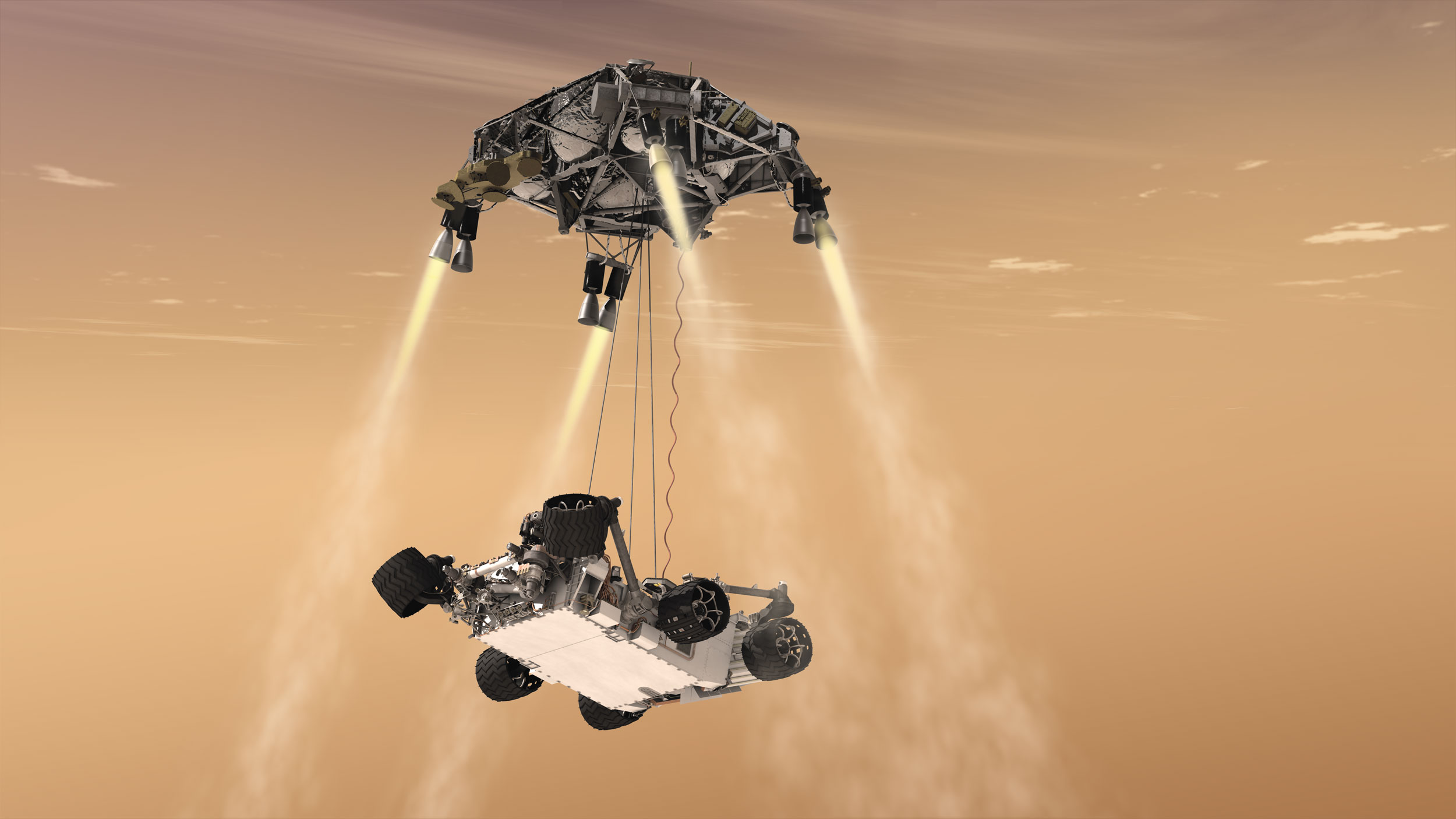Getting 2020 Mars Rover Mic'd Up: Q&A with Musician Jason Achilles Mezilis

If all goes according to plan, a microphone aboard NASA's life-hunting 2020 Mars rover will taste sound waves created in the Red Planet's atmosphere as the robot descends to the Martian surface.
In 2016, NASA announced that the rover, which is scheduled to launch in 2020, will attempt to record video and audio of its dramatic entry, descent and landing (EDL).
Designing a microphone that can withstand the rigors of spaceflight, the breakneck speeds of entry and the atmospheric conditions on Mars has been done before. But circumstances prevented those microphones from being used.
NASA's Mars Polar Lander mission in 1999 had a microphone to record descent audio but unfortunately struck the Red Planet surface at a high velocity, prematurely ending the mission. In 2007, the microphone on NASA's Phoenix Mars lander was turned off due to an unforeseen risk.
Recently, NASA contracted Los Angeles-based record producer and multi-instrumentalist Jason Achilles Mezilis to perform an evaluation study of various microphone designs for the 2020 Mars rover. Mezilis recently released a new LP called "Comedown" and has been showcasing his talents by performing simultaneously on electric guitar, bass and Wurlitzer electric piano, with only a drummer accompanying him. [See a preview video for his new album]
Space.com spoke to Mezilis via email about the microphones and the evaluation process, which was performed at NASA's Jet Propulsion Laboratory in Pasadena, California.

Get the Space.com Newsletter
Breaking space news, the latest updates on rocket launches, skywatching events and more!
Space.com: As you're a recording studio owner and musician, I can imagine that you've come across a wide array of microphones. Can you briefly and simply explain how a microphone works and the differences among different types of mics?
Jason Achilles Mezilis: The recording studio world tends to have its rather typical selection of microphone designs, but there are quite a lot of other technologically varied microphones found in all walks of life. All these operate on different mechanical principles of doing the same job, namely translating physical sound pressure waves into electrical impulses. Each [microphone] is tailored to maximize the returns of doing the job required in that situation — from sound and equalization response curves, to ruggedness, size and cost factors. A microphone that records a snare drum (and has to withstand an accidental thwack from a drumstick) may be of greatly different design than one in a hearing aid or your cellphone. Our task was to recommend our choice for the best microphone design for THIS job.
Space.com: Is recording the entry of a vehicle through Mars' atmosphere something that can be done with an existing microphone, and if not, does it just need a few modifications, or is it a completely custom design?
Mezilis: It can potentially be [done with existing equipment] to some degree, yes … and we were encouraged to do so by incorporating "off the shelf" components as much as possible. Where a lot of the customization comes in is in regards to the level you want to operate at, as well as certain external but necessary restrictions placed on the design itself, like size and power requirements. For a seemingly unobtrusive and (relatively) small piece of equipment, the evaluation of this microphone inclusion had to encapsulate a large number of rather complex fields of study and research. "Outgassing" is a particularly riveting topic I encourage anyone reading this to run a Google search on. [NASA's Mars Rover 2020 Mission in Pictures (Gallery)]
Space.com: Can you explain how you got involved with NASA and what the evaluation process is like for the Mars 2020 rover EDL camera microphone?
Mezilis: Ha … well, I suppose it's fair to say that extraterrestrial audio design isn't exactly a highly impacted field of study. I first read about the EDL camera sequence and approached Matt Wallace (Mars Exploration Rover [MER] Assembly, Test and Launch Operations [ATLO] manager) at NASA with some basic proposals around mid-2016. At that point, I had already conducted about six months of research on my own as well. David Gruel (Mars Science Laboratory [MSL] Assembly Test and Launch Operations [ALTO] manager) eventually got in touch and was amazing throughout, including direct supervision of the initial evaluation study, which ran January-Februrary 2017.
Our task consisted of everything from the basic considerations of desired operation (i.e., what are we actually recording?) to full circuit-pathway modeling predictions based on atmospheric properties of the Martian surface. Certain size restrictions also come into play … there's not a lot of spare room on a $2 billion piece of equipment that's roughly the size of a Volkswagen. Then you have vast daily temperature fluctuations to deal with, not to mention surviving six months in deep space … even Martian dust can be a serious issue to contend with. You can't exactly go out there and wipe it down if things get dirty. So there's a lot to consider, a lot of "health" concerns for our microphone you wouldn't necessarily think about otherwise … for me, that's actually the really fun part.
Space.com: It would be really exciting to hear the first sounds recorded by a microphone on Mars, and a microphone that you evaluated may be the first to actually work. How does it feel to be on the front lines of exploration?
Mezilis: Having participated in this research to assist in retrieving the first sounds ever recorded from the surface of another planet is an honor I can't readily describe. I am incredibly grateful for the tireless work of my brilliant research technician, Caesar Garcia, and to Brad Avenson for his sage advice and enthusiasm throughout. To these gentlemen, as well as a number of folks at NASA including my good friend and Curiosity rover driver Joseph Carsten, I am indebted. Working with people of this caliber is quite a thrill. And I have to say … it's good work if you can get it.
You can learn more about Jason Achilles Mezilis and his music on his website and on Instagram
Follow Steve Spaleta on Twitter. Follow us @Spacedotcom, Facebook or Google+. Originally published on Space.com.
Join our Space Forums to keep talking space on the latest missions, night sky and more! And if you have a news tip, correction or comment, let us know at: community@space.com.

Steve Spaleta is Space.com's Senior Producer. Since 2007, Steve has produced and edited space, science and entertainment-related videos for Space.com. He is also the producer/writer/editor of Space.com's CosMix series on space-enthused artists. He studied psychology at the State University of New York at Stony Brook and is originally from Zadar, Croatia by way of Astoria, NY. To see Steve's latest project, follow him on Twitter and follow Space.com's VideoFromSpace YouTube Channel.









